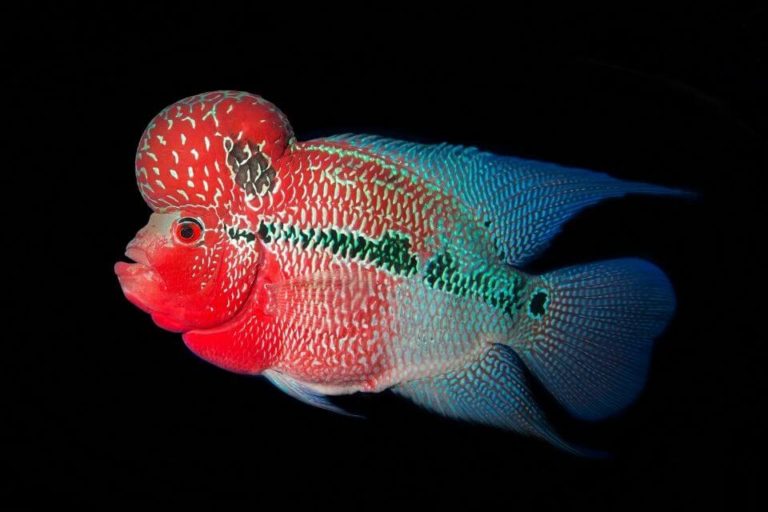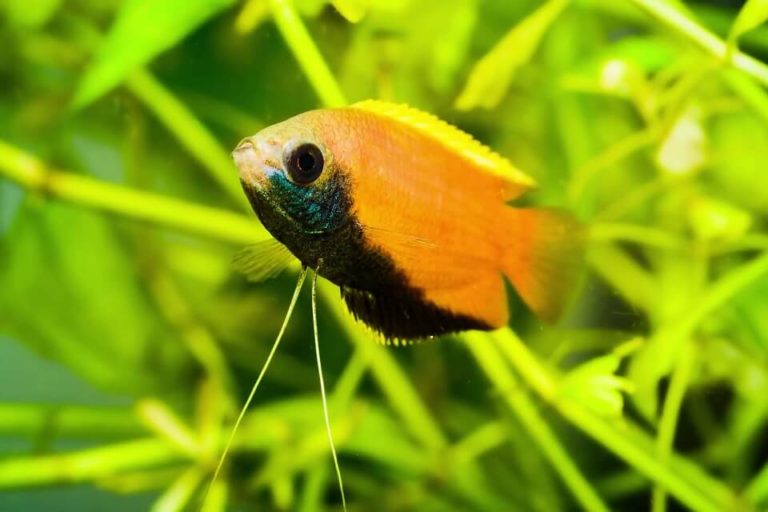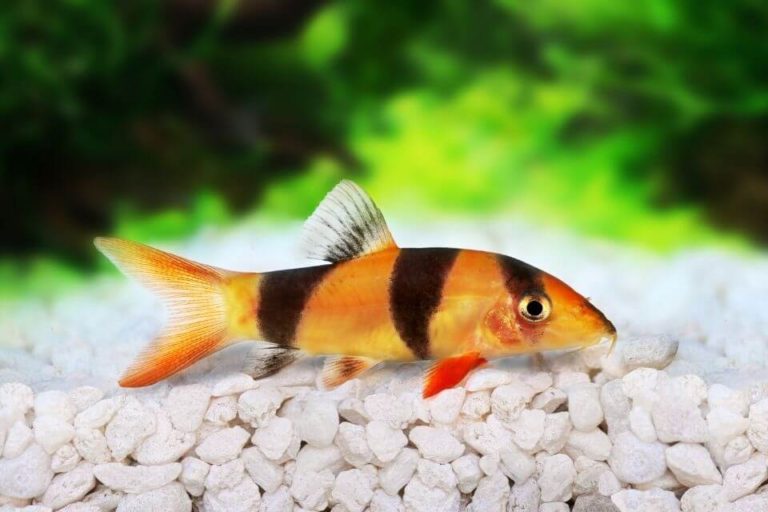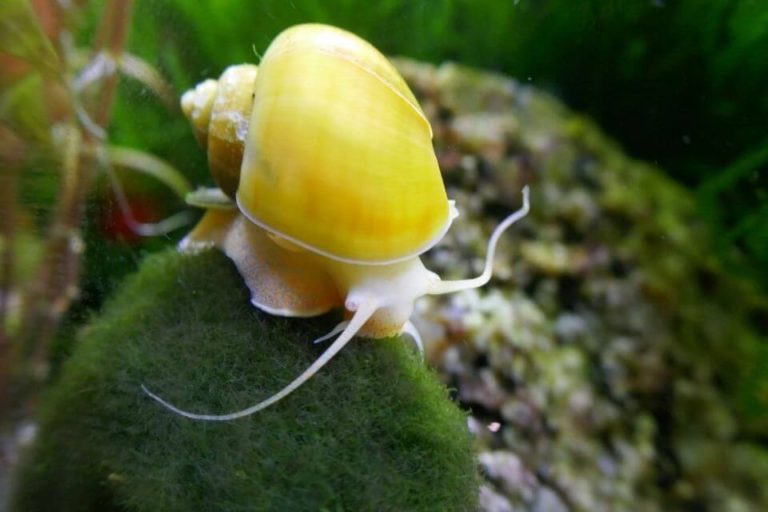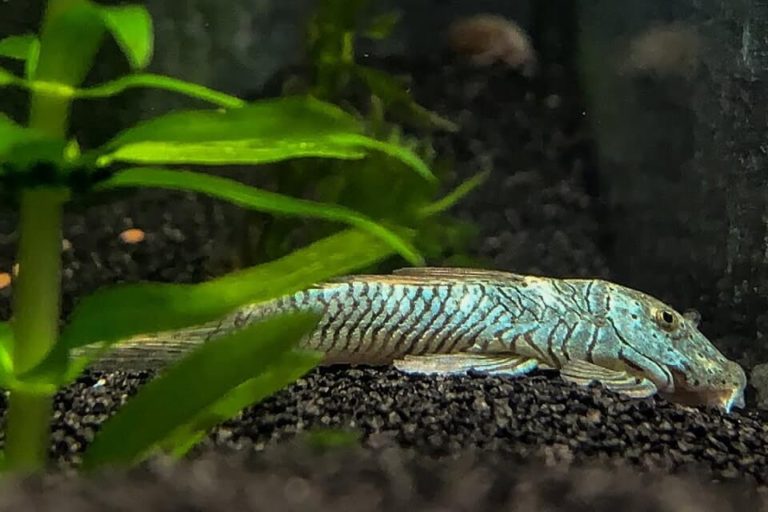Pictus Catfish Care Guide: Tank Mates and Feeding Requirements
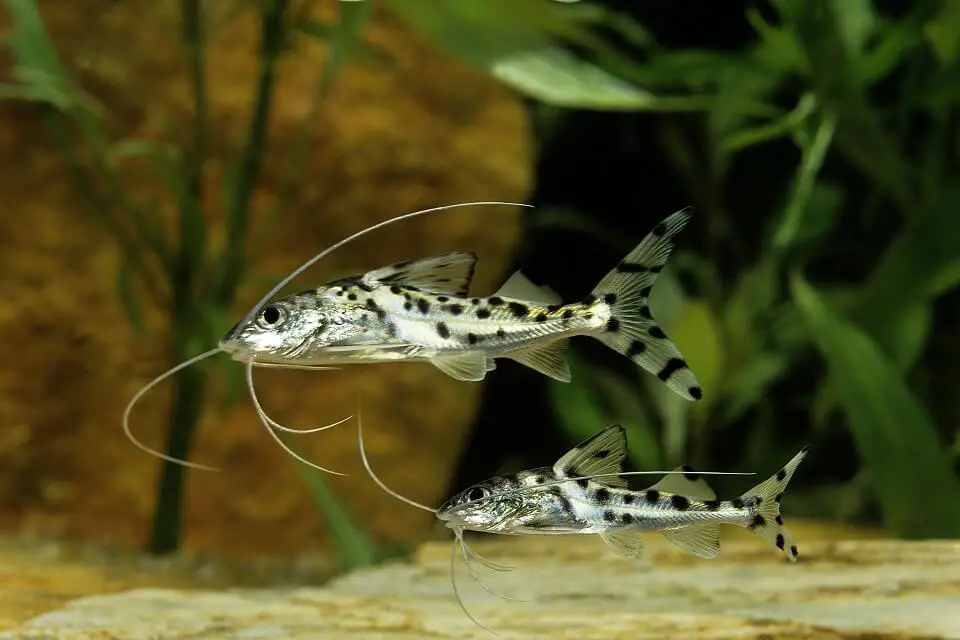
Do you want to start aquarium fishkeeping but don’t know which fish you should bring to your home? The Pictus Catfish is an excellent freshwater aquarium fish species that you can include in the list.
If you consulted a seasoned hobby fish keeper, he would tell you that no fish can equal the Pictus Catfish in terms of delightful characteristics, bursting colors, and energetic vibes.
If you are thinking of bringing this active bottom-dweller fish to your home aquarium, then you may want to know the kind of care they require.
This guide includes all the information you need to know for caring for Pictus Catfish. If you follow alone till the end, you will be a master of keeping these species in your freshwater tank.
| Quick Facts: | |
|---|---|
| Common Names | : Pictus Catfish, Pictus Cat, Angel Cat |
| Scientific Name | : Pimelodus Pictus |
| Family | : Pimelodidae |
| Origin | : Amazon and Orinoco River basins of South America |
| Care Level | : Easy |
| Lifespan | : 8 - 10 years |
| Size (average) | : Up to 5 inches |
| Diet | : Omnivores |
| Breeding | : Egglayer |
| Social | : Not territorial |
| Temperament | : Peaceful |
| Minimum Tank Size | : 50 - 55 gallons |
| Temperature | : 75° - 81°F (23 - 27 °C) |
| Water Hardness | : 5 - 15 dGH |
| Water pH Level | : 7 - 7.5 |
Overview of Pictus Catfish Species.
Pictus Catfish are also known as Pictus Cat and Angel Cat. The scientific name for this species is Pimelodus Pictus.
The Pictus Catfish is a peaceful, scaleless medium-sized fish that belongs to the Pimelodidae family. It is one of the most popular species you can keep in a home aquarium.
This ornamental fish is native to the warm waters of South America and specifically the Amazon and Orinoco River basins.
The Pimelodus Pictus are pretty easy to distinguish from other tank fish species, thanks to their popping body coloring and long white barbels. In general, they have silver-colored skin with very pronounced black spots.
Other than the colors, the Pictus Catfish have sharp pectoral fins that are more angular than those found on other Catfish varieties.
The fins of these species are very sharp and can cut through bottom plants when they are swimming. The fish have an egg-based breeding cycle and require intense care during this process.
This fish species requires moderate care, and they can live up to 10 years with optimal care and tank conditions.
This fish is a scavenger omnivore that rarely becomes full. From high-quality pellets, frozen bloodworms, and shrimps to cut-up vegetables, these fish will eat anything that falls to the bottom of the tank.
Unlike their mellow Catfish relatives, the Pictus Cats are active swimmers, and with this, plus their looks, they can create a very charming scenery when added to a home aquarium.
Origin, Distribution, and Availability
The hotspot for the Pictus Catfish is the Amazon and Orinoco River basins of South America. The Pimelodus Pictus was first described in 1879 by an Austrian zoologist who found it in the warm waters of South America.
The dense warm waters provided perfect conditions for the fish to feed, grow and reproduce.
Perfect hiding places for these fish species are river rocks, caves, and driftwood. Their long barbels help them maneuver in muddy and murky waters too.
The wild varieties are mainly found in sandy riverbeds of Colombia, Venezuela, Brazil, and Peru. Through rigorous breeding procedures, these fish did not take long to be introduced to home aquariums all over the world.
The Pictus Catfish is one of the Catfish species that has been in the aquarium trade for many generations.
Today, you can find this species in many pet stores, with all sorts of variations, because of the serious breeding and various environment adaptations.
Pictus Catfish Typical Behavior
The Pictus Catfish is a peaceful non-aggressive, and non-territorial bottom swimming fish species. Note that if the fish is stressed, hungry, or distracted it can turn to predatory behaviors, this is why it should only be kept with equal-sized tank mates.
As mentioned above, they are pretty active swimmers compared to other Catfish species. The fish is strong and energetic, and it would help if you kept it with other active species.
These fish will spend most of their time hiding. In most cases, they swim in the lower half of your aquarium.
Since they sometimes tend to camp out even for an entire day, it would help if you provided them with hiding places where they can have some privacy.
Although Pimelodus Pictus can live alone without any problems, they are more active when kept with the same species.
Due to their scavenging nature, these fish tend to be more active when feeding. If you especially feed them with something they enjoy eating during campouts, they will get out of their hiding places at speeds that will blow your mind.
It is amazing how this fish species is calm and peaceful but at the same time active and energetic. Every fishkeeper will truly find this very mesmerizing.
Characteristics of Pictus Catfish
Appearance

The Pictus Catfish deserves a lot of credit for the appearance aspect. The fish has a long, slender body covered with scaleless skin. Their mouth is wide and their abdomen is relatively flat.
These fish have black silver and white color combinations that create special markings all over their entire body. They have long whiskers called barbels, a factor that makes them easily distinguishable.
It is possible to see a Pimelodus Pictus with barbels that match the length of the body. Their transparent fins also add to their distinctive appearance features.
The dorsal fin assumes an upright position and it is clearer than the caudal fins. The pectoral and forked tail of this fish is sharp and if brushed at a right angle they can cut through soft substances.
The silvery, smooth look in addition to the colored marking discussed below makes the Pimelodus Pictus a gorgeous addition to a home aquarium.
Colors, and Special Markings
The colors on Pictus Catfish make them very cute. With their glowing colors, these fish will effortlessly capture every ornamental fishkeeper’s heart.
Their theme color is silver but there are of course variations in terms of intensity and how the color is distributed, from one breeding line to another. Some Pimelodus Pictus may have a silverish-white shade as their primary color.
Their dorsal fin is generally black but may in some varieties take the colors and markings of the body. When compared to the caudal fin, the colors on the dorsal fins are somehow faded.
If you want your Pimelodus Pictus to remain with its natural colors, you must provide the right tank conditions with a nutritious diet.
Do you want to know what conditions will keep your Pictus Catfish all dotted and in its pristine colors? Keep reading till the end of this guide. Pimelodus Pictus has very pronounced marking in form of dark dots.
The dots are spread throughout the body and are fairly evenly spaced. The black spots extend even to the caudal and dorsal fins. Markings are less prominent on the stomach side compared to the upper body.
Pictus Catfish Size
Under the right tank conditions, a Pictus Catfish size grows up to an average of 5 inches. Many aquatics believe that they can grow more than 5 inches when they are well-fed.
It is however rare to find a Pictus cat that is beyond 5 inches. Just like with other aquarium fish, the tank Pictus fish can never grow to achieve the size of their wild varieties.
For this fish, the male and female varieties have similar sizes at any growth stage. The females will however look fuller when carrying eggs.
Keep in mind that the condition of the fish when you are buying it will affect the maximum size it will grow into. It would therefore help if you sourced your Pimelodus Pictus from a reputable pet shop where they do proper breeding and aftercare.
Pictus Catfish Lifespan
With proper care, a Pictus Catfish will live for approximately 8 to 10 years. Wild varieties can live for more than this period but unlike the domesticated varieties, they are more exposed to life-threatening elements like larger predatory fish.
Generally, the Pictus Catfish lifespan is longer than that of many other Catfish species.
Just like in the case of size, poor water conditions and incorrect feeding can significantly shorten the lifespan of these fish species. To make your Pimelodus Pictus thrive for a long, you must provide the right care.
It would also help if you picked the healthier and more energetic ones when you visit your pet store. Don’t forget to provide the right disease management to these fish species since this is also a factor that will determine how long they live.
The good thing is that if you feed them properly and provide the right tank conditions, health problems will be greatly reduced.
An optimally cared-for Pictus Catfish Lifespan should clock 10 years and possibly a few more years. Follow through to the next section to know what is needed to keep the Pimelodus Pictus healthy and energetic for a long time.
Habitat, Tank Conditions, and Care
Habitat and Care
Good habitat is paramount when you want to keep your Pictus Catfish healthy and happy. A good habitat for these fish should first be dimly lit since they are generally nocturnal.
Secondly, since the Pictus Cat is adapted to warm water, its indoor habitat should provide exactly the same condition.
Their living space should also be large enough and have mild, slow-moving air. Generally speaking, the Pictus Catfish habitat should simulate every other condition of their natural environments. Let’s look into some of these parameters one at a time.
Pictus Catfish Tank Size
The ideal tank size for a single Pictus Catfish is 50 to 55 gallons. This means that a group of 4 Pictus Catfish need a 200 to 220 gallons tank. Don’t be fooled by its size, the Pimelodus Pictus still needs room to roam when busy and active.
Note that the large tank requirements can limit the number of Pimelodus Pictus you will keep in your home. Also, keep in mind that if you keep these fish in a small tank, the tight conditions may stress them and significantly impact their health negatively.
Tank Setup

As mentioned above, the Pictus Catfish performs better under low light, and hence the tank should be dimly lit. In addition to providing muted light conditions, you should provide enough shaded areas.
Their natural environments mainly feature a sandy substrate and it would keep the fish happy if you included this in the tank.
In the same spirit, you should provide lots of hiding spaces in the aquarium as the fish sometimes needs places where they can have some privacy.
To provide hiding places and shade, you can add artificial rocks, driftwood, and water rocks to the tank. Keep the decorations (logs, branches, and rocks) to the sides and back of the tank.
Do not go overboard with these elements to prevent overcrowding the tank.
To achieve the required amount of current to keep these fish healthy in the aquarium, you should include a premium Hang On Back filter in the setup.
The filtration system is also important as it keeps all the set water parameters stable for this sensitive fish. It, for example, plays a crucial role in keeping nitrate concentration low despite the fish producing a lot of waste.
Suitable Plants
Just ensure that the plants you include in the tank are low-light. You can plant in the tank the Java Moss, Hornwort, Moss balls, or other low-light plants that grow in your locality.
Water Temperature and Conditions
Since this fish is scaleless, the water parameters are very crucial and you should pay much attention to them if you want to keep your Pictus Catfish healthy and happy.
The water should be warm, at least 75°F to 81°F (23 to 27 degrees Celsius). It is good to know that prolonged exposure to low temperatures may lead to increased bacterial and fungal infections.
On the other hand, extended exposure to very high temperatures may lead to organ failure since the oxygen level in water is significantly reduced.
Moving on, the pH of the water should be neutral (around pH 7.0 to 7.5). The water should also be soft with at least a hardness level of 5 to 15 dGH.
Pictus Catfish Food and Feeding
Pictus Catfish are omnivores and will scavenge on both meaty and veggie foods. Since they are nocturnal, they will mostly feed at night but under dim light, you can see them eat even during the day.
These fish are also known to adapt well to pelleted fish food. The common suitable Pictus Catfish foods are brine shrimp, bloodworm, live daphnia, algae tablets, finely chopped meaty foods, veggie matter, sinking pellets, and flake foods.
Always give these fish a balanced diet and put more focus on the live foods.
Common Diseases
The scaleless skin of the Pictus catfish exposes it to more health risks compared to other tank species. If these fish get sick, their health conditions deteriorate in an accelerated fashion to even the point that they may suffer a rapid death.
With this in mind, you must ensure that this sensitive fish has high-quality water at all times and that the tank is clean and not overcrowded. The Pimelodus Pictus are affected by most aquarium diseases but are highly prone to bacterial and fungal infections.
Common symptoms of an ill Pictus Catfish are patches on the skin, loss of appetite, change in color, especially towards the gills, open ulcers, etc.
If you notice any of these symptoms on a Pimelodus Pictus, you should separate it from the others and treat it immediately. It would also help if you engaged a local vet in the treatment process.
Gender Differences
In terms of appearance, there is barely any difference between males and females. You might not see any difference between a male and female Pictus Catfish until they reach sexual maturity where the females may look larger and rounder.
Behavior-wise, the males may be more active than the females and especially when you keep these fish in low numbers. Unlike the females, the males can fight each other if kept in a group of two.
For Pictus Catfish, it is very hard to distinguish a male from a female, a reason why breeding becomes difficult as discussed below.
Breeding the Pictus Catfish
The Pictus Catfish is not one of the easiest fish to breed and there are reasons for that. First, it is hard to distinguish a male from a female, and hence selecting a breeding pair is extremely hard.
Besides, it may take a lot of time for the fish to grow to reach sexual maturity. Even with these limitations, some seasoned fish keepers have still tried to maneuver through the breeding process.
Ideally, since the Pimelodus Pictus is an egg-laying fish, you should provide a large breeding/spawning tank (at least 200 gallons) that is separate from the primary home aquarium.
To initiate spawning, you may need to change the normal water parameters and also increase the number of individuals in the group to increase the chances.
The breeding aquarium should have hideouts and safe places where the females should lay their eggs. Any offspring from the breeding tank should be provided with a safe environment free from adult fish.

Are Pictus Catfish Aggressive?
Pictus Catfish are generally non-aggressive and peaceful. Although they might fight each other (especially the males), they are known to remain friendly with other fish. The male fish will fight each other if they are kept in low numbers.
This means you should be ready to invest in a large tank where you can keep 5 to 6 Pimelodus Pictus to avoid such instances. If you keep the fish happy and healthy, they will show no behavior that is close to aggressive.
How Many Pictus Catfish Should be Kept Together?
They will feel safe if kept in a group of 5 to 6 individuals. Remember that the main consideration here is the tank size and you should not overcrowd them trying to hit this number.
Pictus Catfish Tankmates
Other Catfish species preferably of similar size are the perfect Pictus Catfish tankmates. This fish will also live harmoniously with the Opaline Gourami, Giant Danios, Clown Loaches, Tiger Barbs, and Rainbow Sharks.
The Pictus Catfish will do well if kept in a group of 3 to 4 with other fish species. Again, the tank size considerations should also apply here.
Final Thoughts
Pictus Catfish are peaceful, active, energetic, and a species that will get along well with other fish with similar characteristics. Their appearance is something any fish keeper will fall in love with and their wild entertainment is all you need from an aquarium fish.
Due to their sensitive nature, you have to be very strategic with their water parameters, diet, and feeding requirements as discussed above.
This fish does not come with tons of special requirements. If you can maintain all their tank conditions, you will never have to worry that the fish is stressed or disturbed.
Additionally, due to its peaceful nature, there is great versatility in terms of the fish you can keep them with- they are simply the best community and home aquarium fish.
To acquire this fish, you just need to visit a reputable pet store in your area. Before you take these fish home, it would help if you got clarification of any other matter you think is still unclear about this fish from the team there.
Hopefully, after reading this guide, you can offer the care needed for a Pictus Catfish to ensure that it continues creating its statement in your home aquarium for the longest time!



